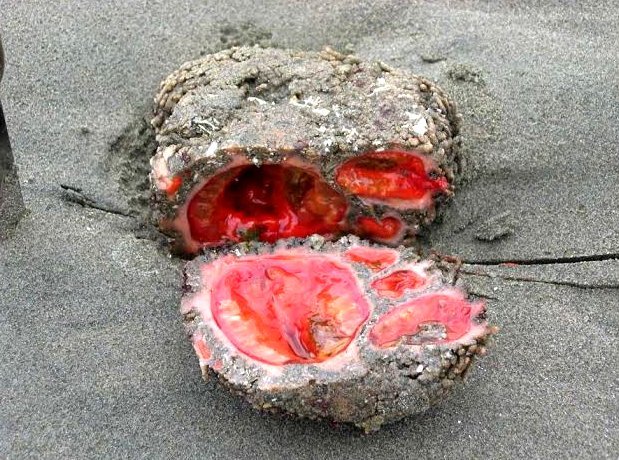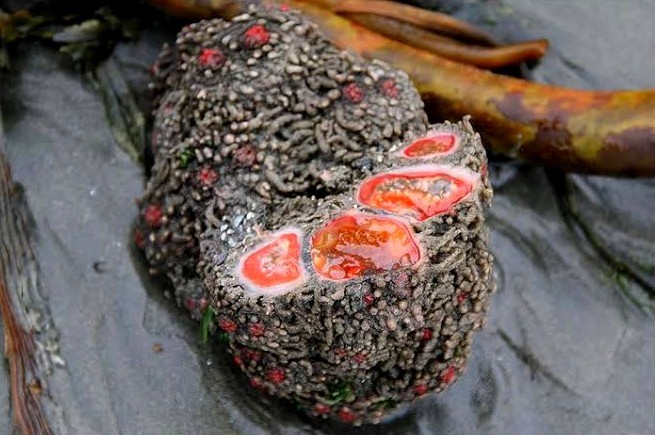Meet Pyura chilensis, the ‘rock’ organism that appears to be sheltering ‘organs’ in its midst.

Pyura chilensis
It can literally have sex with its own self, is eaten by people of Chile and Peru, and contains high levels of vanadium in its blood, which is as red as humans.
Contents ▴ I. Pyura chilensis – The Living Rock:II. It Has No Brain Resulting In No Pain!III. Well, It’s A Food!IV. Male And Female – It’s Both!V. Toxic Vanadium In Its Blood:
Pyura chilensis – The Living Rock:
So much of the ocean is hidden from us – fantastic creatures, deep-sea monsters, perhaps, even mermaids? Life thriving under our seas is riddled with mystery, and the unknown is undoubtedly exciting. The adrenaline rush associated with those creatures forming part of the richness of our blue waters is, however, not restricted to feelings of excitement, but also to horror, fear, and maybe even disgust. One such living organism is the marine filter feeder known as Pyura chilensis.

From the outside, the Pyura chilensis or Piure looks like a rock covered in molluscs.
Related to sea squirts, Pyura chilensis looks somewhat like sea urchins, though not associated to the latter along the evolution ladder. Its appearance is enough to make you throw up your entire meal.

When the Piure is cut open the mass of blood-red organs, skin and muscles are exposed.
On the exterior, it looks like a rock. But, on the inside, a bizarre sight awaits: “organs”, as if, enclosed inside a rock.
It Has No Brain Resulting In No Pain!
Pyura chilensis, having no brain itself – and no sensory organs for that matter – is sure to blow your mind away. Unlike other creatures, it doesn’t feel any grousome human torture.
Well, It’s A Food!
What might sound worse to P. chilensis not acquainted with the organism is that it is a delicacy in certain countries.

The concentration of vanadium produced by the Piure is around 10 million times the amount found in surrounding seawater. Because of its high level of vanadium, and the element’s toxicity, there are concerns about eating the creature.
It can be found in the intertidal zones of Chile and Peru, whose people are known to feast on this bizarre marine creature.
Male And Female – It’s Both!
Keeping up with its weird nature, the P. chilensis is a hermaphrodite: it has both sexes. It is born male and once it hits a certain maturity level, it turns into a creature accommodating both sexual apparatuses. So, if one individual of the group does not find a mate, it can impregnate himself! Actually, herself. That’s the thing make it really weird.
Cross fertilisation is more common, but offspring stemming from self-fertilisation has been observed to be equally successful.
Toxic Vanadium In Its Blood:
P. chilensis has another surprise in store. Its blood has an extremely high concentration of heavy metal vanadium: levels millions of times greater than their environment―the sea-water.

“The most ‘wtf’ animal on the planet.” ―Abraham Lincoln
Vanadium is toxic to other organisms, but not so for P. chilensis. Now, question is, is the presence of the heavy metal harmful to humans consuming the organism? It is still unclear as to the related implications, just as the purpose of the metal is not yet known
Among the ocean’s countless species, some stand out for their looks—but not always in a good way. Meet some of the sea’s most unusual-looking animals here in this Article.
Source: https://mysteriesrunsolved.com/








